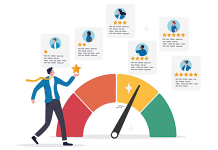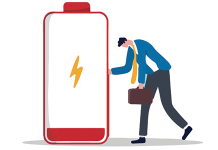We asked B2B sales and marketing professionals how they were feeling about the future of live events. Here’s what they had to say.
Virtual expands the audience
Many of our clients hosting trade shows (and other live events) this season are adding virtual components for those unable (or unwilling) to travel and attend. This has enabled them to offer different tiers of attendance and participation. Allowing someone to view an in-person keynote remotely costs very little but makes that event (and the opportunity to derive incremental revenue from it) more accessible. Even when things get back to normal, there will always be people who want to attend but can’t. Virtual participation (to one degree or another) is likely here to stay, and should be viewed as a net positive (both for hosts and attendees).
Terry Kasdan, founder
atCommunications, LLC
Eager to return to in-person
We are a SaaS company that relied on trade shows to meet and connect with U.S. prospects. We did try a handful of virtual tradeshows, but they did not yield the same results as in-person events do. I think that’s because fewer people attended and the attendees who did show up didn’t enjoy starting Zoom calls with sales reps. It’s much easier and more natural to talk to someone face-to-face. To compensate for these lost opportunities, we have been hosting more in-house webinars. We have had some success with this strategy and we’ll likely continue with it. However, we will return to in-person trade shows once they are up and running again.
Kim Brown
Condo Control Central
Size doesn’t always matter
I’ve spoken at some really prestigious live events that I expected to bring a lot of new leads for my marketing agency. Instead, they generated nothing. On the other hand, during COVID-19, I presented at small webinars that brought a lot of new business. I think it’s more important to have a relevant audience than a crowded one.
Taylor Ryan, CEO
Klint Marketing
A permanent shift to digital
As a B2B company catering to a global group of distributors and retailers, trade shows were in the DNA of our sales strategy. We attended five to seven international fairs, and they took up a big part of our marketing budget. Since COVID hit and the fairs were cancelled, we had to settle for digital trade shows. We didn’t find them very successful. It can be difficult to engage the visitors, make an impression and present your merchandise in a more in-depth way.
What we did instead is refocus our energy into creating a 360-degree digital marketing strategy. We used our budget to reconstruct our website and create better digital content. Surprisingly, we’ve seen more success in terms of conversion. Comparing the budget we spent and the leads we’ve acquired, focusing on a more comprehensive digital marketing strategy has been more effective for us than the trade shows. If fairs do open up again, we will probably put in a maximum of 50% effort than we did before and continue to put our focus on digital marketing.
Rob Zwanenburg, Chief Commercial Officer
Difuzed
Silver linings
I might be in the minority, but done right, online events can be even better than in-person events.
When was the last time you went to an in-person event and every attendee had their easily discerned name floating over their face?
When could you easily browse their LinkedIn profile while also talking with them? When could you, as a sponsor, speaker or host, easily see the number of minutes an attendee spent with a particular talk or on a particular page of content at an in-person event?
There are a lot of things I love about live events, but they don’t include the huge expense, the travel, the sore feet and time away from my desk and away from my family.
Bobbie Carlton, founder
Carlton PR and Marketing





